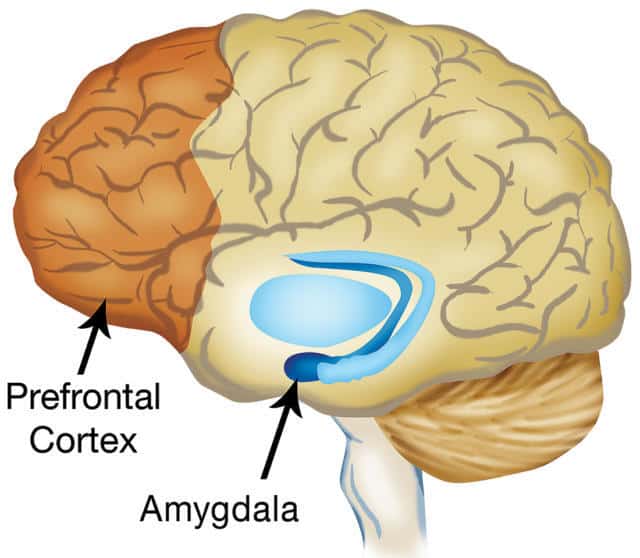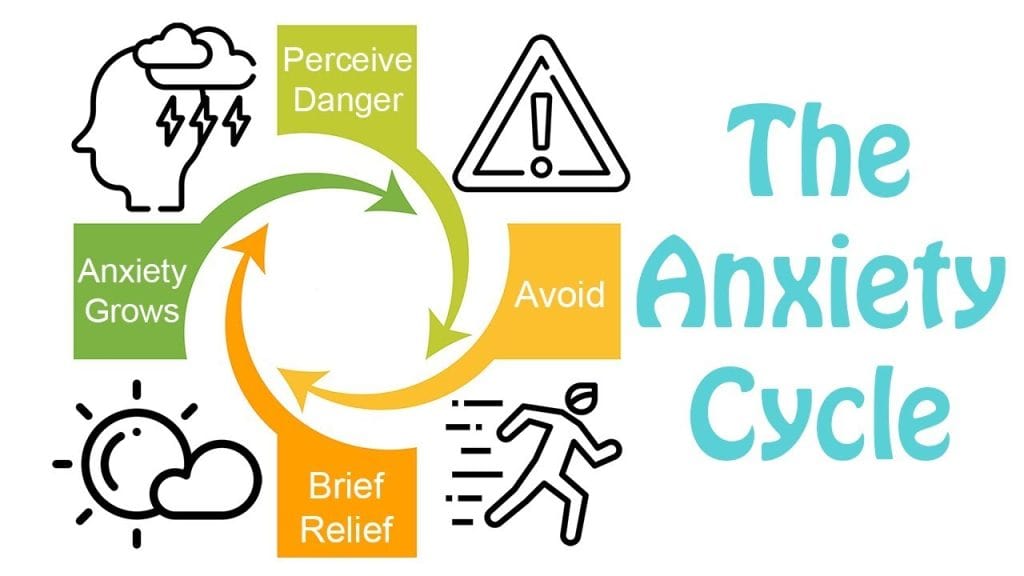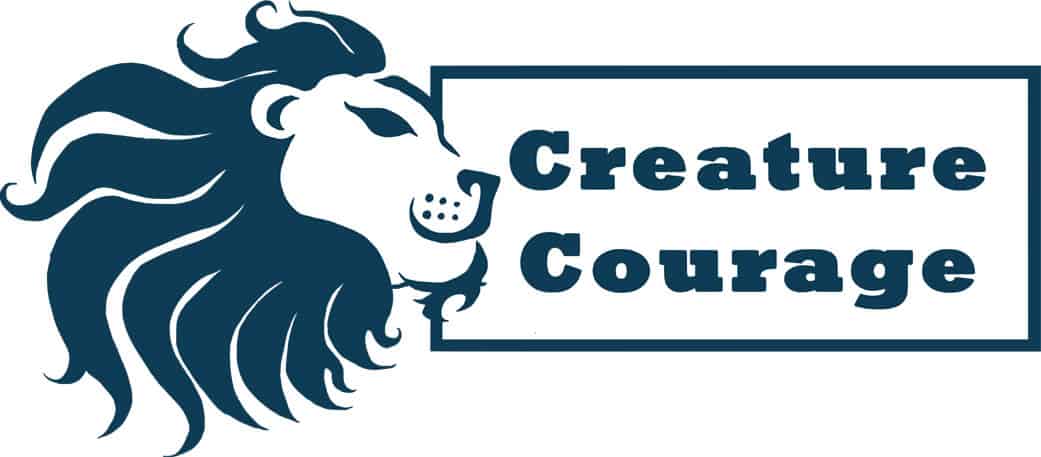What is the Best Form of Therapy in Phobia Treatment?
If you have a phobia and are actively searching for the best treatment, you’ve no-doubt come across many options for treating your phobia with hypnotherapy alone. However, though hypnotherapy is a brilliant resource and something we whole-heartedly promote, it should never be considered without exposure therapy. It’s this lack of understanding about therapy in phobia treatment that we will be assessing in this article, because not only is phobia treatment through hypnotherapy a bad idea, but also a complete waste of money. Further, there’s every chance that combating your phobia without exposure therapy will actually make your phobia worse!
Phobias can be debilitating. They can trap individuals in a cycle of fear that limits their daily activities and impacts across their whole life. While various treatments are available, the effectiveness of hypnotherapy without immersive exposure therapy remains a contentious topic.
This article delves into the scientific reasons why hypnotherapy alone is insufficient for curing phobias and highlights the necessity of combining exposure therapy for lasting change.
Clinical vs. Stage Hypnotherapy
Just so that we’re all on the same page, what I mean by ‘hypnotherapy’ is: Clinical Hypnotherapy. Clinical Hypnotherapy differs significantly from stage hypnotherapy – which is the type used purely for entertainment and often misleads people into believing they lose control when hypnotised (despite what you might have seen on TV, this isn’t actually that case).
The reality is that during Clinical Hypnotherapy, individuals remain in complete and total control, we’ll come to this in a minute, however, stage hypnosis is actually not real hypnosis at all and is entirely for performative.
Clinical hypnotherapy involves entering a highly relaxed state – something that you’re never going to be in on a stage in front of hundreds of other people. You need this relaxed state to facilitate inner absorption and focused attention to the process. Clinical Hypnotherapy is for you to come out the other side in a far better and comfortable, confident position than when you entered.
This focused and attentive state is where changes can be made far more easily within the subconscious mind. I like to call it ‘consciously going into the subconscious.’
To better explain it: the person being hypnotised can get up at any time they want, they do not lose ability to connect with reality. They are simply in a deeply relaxed state. Many people have confused the two types of hypnosis, but one is a deeply relaxed state where treatment can forge powerful and positive changes to your phobia, whilst the other one can suggest that you should run around a stage pretending to be a chicken. You can see the difference, right?
Immersive Exposure Therapy for Phobia Treatment
Immersive exposure therapy happens when someone chooses to face the trigger of their fear, thus immersing and exposing themselves fully to that fear. The goal of exposure therapy is to train the brain that the trigger of the phobia is not actually a threat. The process involves gradually and repeatedly exposing individuals to their phobic triggers, but always initially in a controlled environment.
Hypnotherapy comes in as a support to exposure therapy but, as we will show, it does not work on its own to cure a phobia. Exposure therapy is essential for the survival part of our brains to learn and make lasting changes around fear.

Misleading Phobia Treatment Claims Actually Make Your Phobia Worse!
Many people are tricked into buying hypnotherapy treatment for their phobia when they read the claims that no frightening exposure therapy is needed.
Of course, much like anything else in life, the offer of a risk free phobia treatment where you barely have to broach the notion of your actual phobia is incredibly. Why subject yourself to even a hint of discomfort from having to directly face your fear, when there’s no need. It’s never made much sense to me, there’s at least perceived risk in nearly every action why would overcoming something you are fearful of be an even easier option?
So, yes, taking action and facing yours fears through exposure therapy is absolutely essential for overcoming your phobia for good, forever!
Honesty is vital – facing your fears is difficult. It’s hard emotionally, and it’s challenging both physically and psychologically. However, as we just mentioned, that’s true for a great many things we aim to accomplish – it’s tough to start, and can often feel as scary as the fear itself. Again, the more you try and the more consistent you are with your efforts the easier it becomes to face your fears and overcome them.
Trying to take the easy way out through avoidance actually only reinforces your fear more. It’s why doing hypnotherapy alone and avoiding exposure therapy is just about the worst thing you can do!
Avoidance Therapy only Reinforces Fear
Avoidance is a common reaction to fear. Of course, as a survival mechanism, it’s a natural response, and aims to protect us from the threat. Yet, avoidance can end up reinforcing and deepening our fears.
This response is incredibly inconvenient because our brains are incredibly adept at helping us avoid threats, even when they are not actually threats at all. Being able to understand this is critical for overcoming phobias and anxiety disorders.
To get a better handle on this, we first need to look at the basics of how fear operates within the relevant parts of our brains (don’t worry, no psychology training is required!).
The Fear Response and Our Survival Brain
The part of our brain known as the Amygdala is a part of our brain’s limbic system that plays a critical role in our fear response. It assesses threats from memories of past experiences and then triggers the fight-or-flight reaction. This ancient survival mechanism is designed to protect us from danger. However, when the amygdala records a non-threatening stimulus as dangerous, it leads to irrational fears or phobias. Unfortunately, it is often inaccurate about real danger!
Inconveniently, the amygdala doesn’t realise that thousands of years have gone by and that we are no longer cavemen living in the bushes. We have evolved too quickly for it to have adapted to our current living conditions. Back then, everything could kill us, so we needed an heighten sense of danger and precaution. Obviously, this is no longer the case in our modern age. The risks to our lives are significantly lower. Now, more than ever, humans are living longer and healthier with the aid of modern medicine and science.
A Disconnection from Rational and Logic
Unfortunately, our amygdala is not able to communicate with our prefrontal cortex – the more rational side of our brain, that makes better judgement calls and rationalises just how dangerous something actually might be (or might not be)!
Where the prefrontal cortex can understand grey, the amygdala only sees things in black or white (sometimes it doesn’t even see things at all).

Our brain would much rather sacrifice new experiences and growth for the ‘better safe than sorry’ approach. The amygdala is not, necessarily, willing to let us take risks. Our happiness and mental wellbeing are not its priority, but keeping us safe and alive is (and, you might argue, that doesn’t sound particularly bad). However, it doesn’t tend to take into account whether we’re spending all our time scared and stressed, which is why our amygdala’s reaction can be disproportionate to the actual threat. This helps to explain why phobias so often seem irrational.
Frustratingly, because the pre-frontal cortex and the amygdala don’t communicate, we can’t simply talk ourselves out of a phobia. Therefore, we need to teach the amygdala through taking appropriate actions and creating new positive memories around the fear trigger.
So, you can perhaps begin to better understand why avoiding actually facing your fears, and trying the easy hypnotherapy way out, is only going to continue to train your brain in fear.
There’s more to learn, but if you want more information on fear regulation, and gain a greater insight into exposure therapy, please check out this study.
How Avoidance Strengthens Fear
Avoidance prevents our brains from learning that the perceived trigger for our fear is not really harmful at all. Now, that avoidance does make sense, after all why would you want to purposefully scare yourself? Except, the problem with that is avoiding the trigger will actually make the fear worse!
Think of it this way: when you avoid something you’re scared of, what you’re doing is confirming to your amygdala that the threat is valid and really is something dangerous. Again, If it wasn’t dangerous, why would you avoid it? So, this avoidance response reinforces the idea that the fear and anxiety experienced over the trigger is justified and necessary for survival.
It might seem dramatic but this is how our brains are designed to work, and means that your amygdala will only heighten your fear should you encounter the same fear trigger in the future.
This is how phobias get worse over time. Yet, when treated appropriately by qualified practitioner exposure therapy can help break the fear cycle for good.
The Cycle of The Avoidance Habit
- Encountering the Fear: When faced with a fear trigger, our amygdala signals fear and creates uncomfortable feelings both physically and mentally.
- Avoidance Behaviour: To avoid this discomfort, we decide to avoid the trigger.
- Reinforcement of Fear: Avoidance provides a reward of temporary relief, but strengthens the fear response over time, creating long term suffering as anxiety increases over time.

If you know anything about dog training, it’s very similar to encouraging positive reinforcement by producing a treat or affection after good behaviour. However, if you wrongfully reward your amygdala for helping you avoid your fear, it will become worse!
As we’ve said, to overcome fear, it is essential to break this avoidance cycle. Continuing to live in the avoidance cycle means that your primitive survival instinct is in control, and making choices for you. These choices, made from fear, are usually limiting, irrational, and so often isolating. When your survival instinct is calling the shots, your life cannot grow and thrive, due to you being in a perpetual state of anxiety.
We’ll go into the science of how exposure therapy can play the key role in breaking the anxiety cycle.
Understanding how phobias form and operate in our minds helps to illuminate the importance of why exposure therapy is absolutely necessary to overcome your phobia long-term.
Understanding Phobias
Phobias are intense, irrational fears of specific objects or situations, usually formed in childhood from learned behaviour or a frightening memory. Memory plays a crucial role in phobia development. When a person encounters a fear-inducing stimulus, the amygdala records this experience, creating a memory link between the stimulus and fear. This link persists and is strengthened each time the person encounters the trigger and reacts with avoidance. This then causes the person to experience intense fear whenever they encounter the stimulus again.
The amygdala then stores these fear memories and learned behaviours. When faced with a phobic trigger, the amygdala sends a distress signal, prompting a fight-or-flight response.
The amygdala quickly assesses potential threats and triggers a physiological reaction. This reaction, however, is based on stored memories rather than rational analysis which happens in the pre frontal cortex. And because these two part of the brains are not able to communicate, rational thinking fails to stop the fear response. Though the brain is trying to ‘protect’ us, it’s over the top threat assessments usually are just getting in the way of living life.
The Limits of Hypnotherapy in Phobia Treatment

Hypnotherapy involves inducing a trance-like state to explore thoughts and feelings in the conscious and subconscious mind. While it can offer temporary relief and insight, it lacks the essential component of actual real-world experience to create new memories. As mentioned, creating memories are the only way the amygdala can learn and change.
In short, you need to have a memory of facing the fear, pushing through the fear and coming out the other side unharmed. This is the only way for our survival brain to let go of its need to protect us from the trigger and its perceived threat. It NEEDS to know that the trigger is safe. This is why immersive exposure is so necessary for reconditioning the amygdala’s response to fear triggers.
Habituation and Extinction
Exposure therapy is grounded in the principles of habituation and extinction. By confronting their fears in a safe setting, individuals can desensitise their amygdala’s response over time.
Habituation is a form of non-associative learning in which a non-reinforced response to a trigger decreases after repeated or prolonged presentations to that trigger. Extinction refers to the fading away and eventual elimination of undesirable behaviours.
Hence, habituation occurs when the brain becomes accustomed to a trigger after repeated exposure, leading to a decrease in fear response. Essentially, we become more comfortable in the presence of the fear as its effect on us becomes weaker and we come to realise that it is no longer a threat.
The Process of Change
- Initial Exposure: Safe and controlled exposure to the fear-inducing trigger.
- Repeated Exposure: Multiple experiences teach the brain to associate the trigger with safety – rather than danger.
- New Memory Formation: The amygdala forms new memory patterns to recognise the trigger as harmless in the future
The Importance of Multiple Exposures in Forming New Habits
One-time exposure is insufficient for lasting change. To have lasting results, multiple experiences of safely experiencing the trigger are needed to rewire the brain. These experiences then become new habits. Habits are automatic behaviours triggered by specific cues or triggers. Phobias can be seen as maladaptive habits where the cue (phobic trigger) leads to an automatic fear response. The reward in a phobia habit loop is from the temporary relief avoidance gives. Changing this negative fearful habit requires altering the brain’s response to the cue to form a new positive conditioned habit.
This process is akin to building any new habit – it requires repetition and consistency. To replace the old fear memory that causes the phobic reaction, the brain requires consistent and repeated exposure to solidify new, non-fearful memories. This then can allow the brain to relax to form a new positive habit of how to react to the trigger. Remember, they amygdala does not want to take any risks, it wants to be 100% sure things are safe. Repeated exposure helps the amygdala to re-evaluate the threat and learn that it is not harmful.
The Science is Proven
Research supports the necessity of multiple exposures for effective phobia treatment. Plenty of studies have shown that repeated exposure sessions lead to significant reductions in fear and avoidance behaviours. I can also contribute and bolster this research with my own experience of nearly a decade of treating animal phobias.
For example, on my Spider Courage Experience workshop, most of my clients will feel completely over their fear of spiders in just one session. But because I understand the neuroscience, I will often send my clients home with a house spider to practice with. This is done willingly because they feel so comfortable with spiders by the end of the day.
Even though they feel like they’re completely over their fear, I remind them it must become a new conditioned habit. Much like learning any new skill, one-and-done is not enough to see your phobia gone for good. The skills they are taught to use in our sessions need to be embedded.
It’d be Sod’s Law that they didn’t see a spider for weeks or even months after treatment, forget about everything we’ve done and BAM!, a spider appears and they’re all the way back to square one!
So, they take home a spider, the one they used to overcome their fears in the session, and they interact with it every day for about a fortnight. This reinforces and solidifies the new habit of how they react around spiders. The survival brain learns that the spider is definitely not a threat and lasting freedom for their fear is achieved. Ta-dah!
Unfortunately, most hypnotherapist and even other exposure therapists don’t mention this or help their clients to get the consistent exposure that they need. It’s sad but true.
Debunking the Hypnotherapy-Only Myth:
A Scientific Consensus
Hopefully this has so far explained a bit more about the basics of how the human brain processes and learns fear. Promoters of hypnotherapy-only solutions either misunderstand or misrepresent the science of phobia treatment. Without immersive exposure, the amygdala cannot form new, non-fearful memories. Thus, hypnotherapy alone cannot provide a complete cure for phobias. Exposure therapy helps create new neural pathways, allowing the brain to respond differently to the phobic trigger. Over time, the new response becomes the default, replacing the old fear habit. The brain’s plasticity allows it to adapt and change.
The consensus in psychological research is clear: exposure therapy is essential for effectively treating phobias. Hypnotherapy can aid the process but cannot replace the need for real-world exposure. However, the proof of the success of combined hypnotherapy and exposure approach is backed by neuro-science.
A Combined Approach Works Best
 While hypnotherapy alone is insufficient, it can complement exposure therapy and help it be more successful and effective. Hypnotherapy can prepare individuals for exposure by reducing anxiety and increasing their willingness to confront their fears.
While hypnotherapy alone is insufficient, it can complement exposure therapy and help it be more successful and effective. Hypnotherapy can prepare individuals for exposure by reducing anxiety and increasing their willingness to confront their fears.
Hypnotherapy’s Role in Exposure Therapy
Hypnotherapy works by placing individuals in a state of deep relaxation and heightened suggestibility, making them more open to new ways of thinking and less resistant to confronting their fears. This state allows for the effective implementation of exposure therapy techniques, as clients are more likely to engage with and process the feared stimuli in a constructive manner.
For example, one of the ways the survival brain makes us uncomfortable when facing our fears is by causing an overload of adrenaline. When this happens, it feels so intense that it makes it feel like facing the fear is impossible and not within our control. However, this adrenaline rush usually only lasts for about 20 minutes. Once the initial rush subsides, individuals can begin to calm down and face their fear in a more rational state.
Using different therapeutic techniques such as hypnotherapy can help prepare people to push through this initial discomfort of adrenaline overload to make exposure therapy more effective. These techniques can even help a person to avoid the adrenaline overload all together by making it easier to take action before the fear can fully take over. A person’s resolve and coping skills are further strengthened by the rewiring of the subconscious through hypnotherapy.
When combined with hypnotherapy, the exposure can occur in a highly suggestive state, making the therapy more potent and less distressing for the client. This is why the combined approach is so effective and is better than either hypnotherapy or exposure therapy alone.
The Synergy of Combined Therapy
- Preparation: Hypnotherapy can help individuals manage anxiety and build confidence.
- Exposure: Gradual exposure to the phobic trigger reconditions the brain’s response.
- Reinforcement: Hypnotherapy can reinforce the progress made during exposure sessions.

Case Studies and Evidence
Case studies have demonstrated the effectiveness of combining hypnotherapy with exposure therapy. Individuals who undergo both treatments usually experience greater reductions in fear and more sustainable outcomes.
A wealth of studies demonstrate that combining hypnotherapy with exposure therapy results in more rapid and sustainable improvements in patients with specific phobias.
Overcoming Animal Phobias Using Hypnotherapy and Exposure Therapy
A notable case study demonstrates how combining hypnotherapy with exposure therapy can effectively treat animal phobias. This case deals with specifically cynophobia (the fear of dogs). In this study, this combined approach has shown to be more successful than hypnotherapy alone, offering a comprehensive treatment that addresses both the cognitive and emotional aspects of the phobia.
Case Study: Young Boy Overcomes His Dog Phobia
A young boy exhibited severe cynophobia, experiencing intense anxiety and avoidance behaviours whenever he saw or thought about dogs. Initial attempts to treat his phobia using hypnotherapy alone provided limited relief. The treatment was then modified to include exposure therapy, aiming to provide a more holistic approach to animal phobia treatment.
Results and Effectiveness
The combination of hypnotherapy for phobia, and exposure therapy proved highly effective. The boy’s anxiety significantly decreased, and his ability to approach and interact with dogs improved markedly. Follow-up assessments showed sustained improvements, with the boy reporting a significant reduction in his fear of dogs and an increased ability to manage his anxiety when encountering dogs in daily life. He even expressed a desire to have a pet dog, indicating a complete turnaround in his attitude and behaviour towards dogs.

This case highlights how the integrated approach of hypnotherapy and exposure therapy can offer more substantial and lasting results compared to hypnotherapy alone. By addressing both the psychological and behavioural components of the phobia, this combined method facilitates a more comprehensive and effective treatment.
Evidence of Effectiveness: Research Findings
The effectiveness of combining hypnotherapy with exposure therapy in phobia treatment is well supported by empirical research. An in depth study found that integrating these therapies can significantly reduce anxiety symptoms compared to when hypnotherapy is used alone:
While hypnotherapy works as a standalone treatment, it combines effortlessly with other forms of therapy. Therefore, hypnosis can form part of any toolkit of therapies for mental wellbeing practitioners to help clients with conditions that have so far been untreatable (Whorwell, 2008).
Exposure therapy, particularly when augmented by the suggestibility state of hypnosis, helps individuals confront their fears in a controlled and safe environment, leading to reduced phobic responses.
I can also vouch for this in my work of treating animal phobias with my business Creature Courage. Several of my past clients had wasted a lot of time and money on expensive hypnotherapy treatments before coming to me. They either did not have much success at all or quickly developed their phobias again after treatment. They finally achieved the freedom they were seeking with Creature Courage. I use both hypnotherapy and exposure therapy alongside a plethora of other proven phobia fighting techniques. This mutli-technique approach gives the treatment the highest chance of success.
The Long-Term Benefits of Facing Your Fear

For a phobia to be truly overcome, the brain must experience and re-evaluate the feared stimulus in a safe environment. Hypnotherapy alone does not offer this necessary exposure, making it an incomplete solution. The integration of hypnotherapy and exposure therapy, backed by scientific evidence, provides a more effective approach. By understanding the brain’s mechanisms and the importance of habituation and extinction, individuals can achieve lasting freedom from their fears.
Confronting fears, rather than avoiding them, leads to long-term benefits. The brain learns to handle the feared stimulus without triggering a severe fear response. This process builds resilience and reduces anxiety over time.
Exposure therapy not only diminishes fear but also builds confidence. Each successful encounter with the trigger reinforces the brain’s understanding that it can handle the situation. This newfound resilience can translate to other areas of life, promoting overall mental well-being. Once you learn how to handle one trigger of anxiety with courage, you can then learn to start handling all anxiety triggers with courage.
Understanding how avoidance reinforces fear is crucial for addressing and overcoming phobias. By embracing exposure therapy, individuals can break the cycle of avoidance, retrain their brain, and achieve lasting freedom from fear.
Creature Courage: Harnessing Neuroscience for Effective Phobia Treatment
 Creature Courage understands the science behind phobia treatment and leverages the power of neuroscience by combining hypnotherapy and exposure therapy. This dual approach ensures the most effective treatment for animal phobias. Don’t be fooled by those who claim hypnotherapy alone can work. Either they do not understand neuroscience or are deliberately scamming people.
Creature Courage understands the science behind phobia treatment and leverages the power of neuroscience by combining hypnotherapy and exposure therapy. This dual approach ensures the most effective treatment for animal phobias. Don’t be fooled by those who claim hypnotherapy alone can work. Either they do not understand neuroscience or are deliberately scamming people.
Additionally, Creature Courage allows our clients to prove that our approach works on the same day of treatment! Our clients are comfortably interacting with the trigger animal in just a few hours. When doing hypnotherapy, you leave without having any proof that it has worked. By the time you encounter the trigger animal again and realise that you are still terrified, it is too late. Don’t waste your money. Embrace a scientifically validated method that addresses the root cause of the fear and leads to lasting change.
Find out how you can get over your phobia in as little as one day with Creature Courage! Get in touch today to book your free consultation call.
References and Further Reading
- Understanding the Role of the Amygdala in Fear and Phobias
- The Efficacy of Exposure Therapy in Treating Phobias
- Habit Formation and the Brain: A Neuroscientific Perspective
- Breaking the Cycle of Avoidance in Anxiety Disorders
- Valentine, KE, Milling, LS, Clark, LJ & Moriarty, CL (2019) The Efficacy of Hypnosis as a Treatment for Anxiety: A Meta-Analysis, International Journal of Clinical and Experimental Hypnosis,67:3, 336-363, DOI: 10.1080/00207144.2019.1613863
- Hirsch JA. (2018) Integrating Hypnosis with Other Therapies for Treating Specific Phobias: A Case Series. Am J Clin Hypn. Apr;60(4):367-377. doi: 10.1080/00029157.2017.1326372. PMID: 29485374.
- Jiang, H, White, MP, Greicius, MD, et al. (2017) Brain Activity and Functional Connectivity Associated with Hypnosis, Cerebral Cortex, 27 (8): 4083–4093


